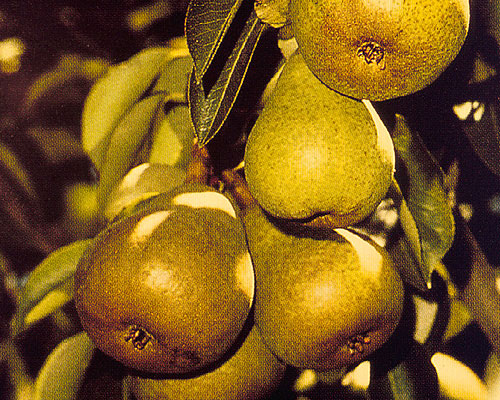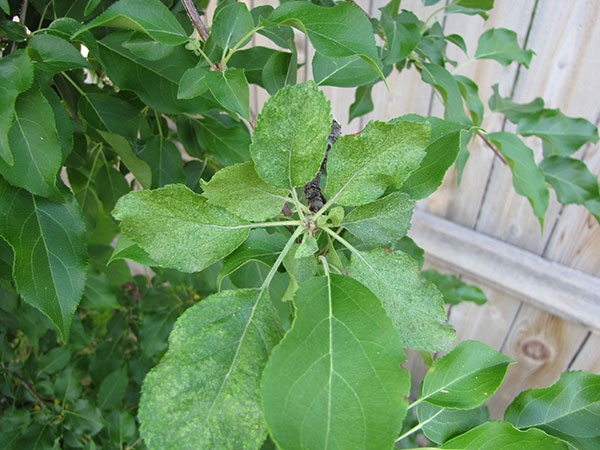Rust Mites
HOSTS
- Apple
- Peach/Nectarine (see Peach Silver Mite)
- Pear
DESCRIPTION
Rust mites are tiny mites (too small to see without the aid of a microscope) in the eriophyid group. Generally, rust mites are of little concern to fruit growers. Foilage of pear is very sensitive to rust mites, and symptoms can be seen in moderate to high populations. Lower populations can be tolerated, and serve as food for beneficial insects.
BIOLOGY
Adults overwinter under leaf bud scales of pear and apple, and emerge with new leaf growth in the spring. There are many generations throughout the summer.
SYMPTOMS
- Russeted fruit
- Bronzed or necrotic lesions on leaves
- Stippled appearance to leaves
GENERAL MANAGEMENT
Treatment is rarely needed for rust mites in Utah. On apples, rust mites can be beneficial in that they may serve as alternative prey for predatory mites that also feed on spider mites. In pear, lower populations can be tolerated, but higher populations may need a miticide or 1% oil treatment.
Monitoring:
Starting in mid-spring, look for foilage that is stippled (tiny flecks of white), indicating rust mites.
Insecticides:
- Residential: dormant oil° alone or with carbaryl; sulfur (single application, do not mix oil and sulfur)
- Commercial: for delayed dormant application Click Here; for fruit present application Click Here



